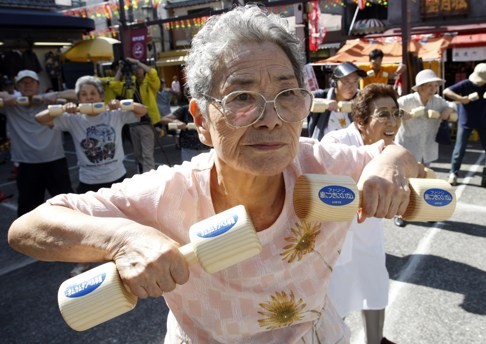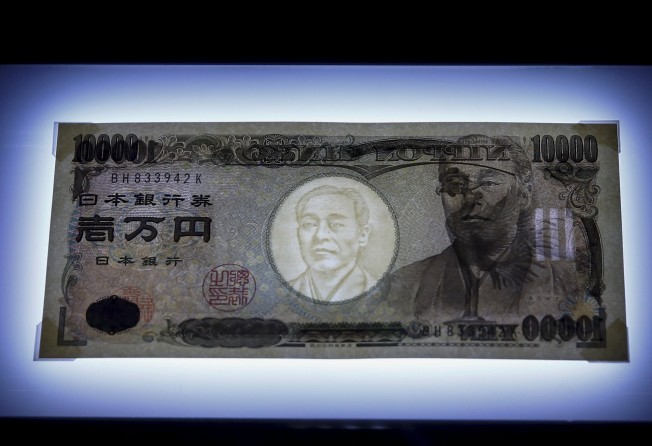
Why Japan may be forced to lower the yen again

“Here, you see, it takes all the running you can do, to keep in the same place. If you want to get somewhere else, you must run at least twice as fast as that,” said the Red Queen to Alice in Lewis Carroll’s Through the Looking Glass.
That description could just as easily be applied to 21st century Japan.
Despite the Bank of Japan’s (BoJ) full-throttle programme of quantitative and qualitative easing (QQE), the Japanese economy has shrunk for two successive quarters, putting the country into a technical recession for the fourth time in five years.
Japan’s public debt to gross domestic product ratio remains a heady 240 per cent. While Japan’s ageing population has been taking statins, the public debt build-up has been on steroids.
Japan’s central bank has thus far not reacted, leaving its monetary policy settings unchanged albeit noting as regards inflation growth “some indicators have recently shown relatively weak developments”.
Perhaps the Bank of Japan has become more conscious that its activity in the Japanese government bond market is crowding out private investors. Whatever the motives for “running on the spot” rather than expanding QQE, the BoJ will be very aware its own April Outlook for Economic Activity and Prices now seems optimistic.
“Japan’s economy is likely to continue growing at a pace above its potential from fiscal 2015 through fiscal 2016,” the Outlook said, while also acknowledging that under one methodology, the country’s potential growth rate had been “estimated to be “around 0.5 per cent or lower” recently.
Yet, even as Japan has sunk back into technical recession, the unemployment rate hit a 20-year low of 3.1 per cent in October, arguably anomalous in a recessionary environment but at least partly explained by the fact that, with an ageing demographic, the current working population pool is shrinking.
And this is where the story gets even more interesting.
Prime Minister Shinzo Abe’s government is seeking to bring in legislation to raise Japan’s minimum wage by 3 per cent a year for the foreseeable future in an attempt to stimulate consumer spending and pull the country out of deflation.
But if you have near-full-employment and little potential for productivity gains, raising wages will increase production costs with no certainty those can be easily be passed on to consumers, when there is precious little evidence of inflation in major economies.
In the absence of structural reforms, there is a risk that increasing Japan’s cost base leads to an erosion of its competitive position in world markets.
Japan’s policymakers will no doubt already have taken note of the fact that Japanese exports fell in October, declining for the first time since August 2014.
Of course, one way to ensure Japan’s competitive position is unaffected by attempts to increase Japanese workers’ wages is to make the country’s products cheaper by weakening the yen.

Japan’s exports would become cheaper for others to buy, while imports into Japan from abroad would become dearer, encouraging their substitution by locally produced goods.
While that would fuel a rising current account surplus that would ordinarily slow the pace of yen weakness as the surplus of overseas earnings is converted into yen, Japan’s exporters might also rationally conclude that if their home currency’s direction of travel is again downwards, converting foreign receipts into the yen need only be done on a minimum operational requirements basis.
Of course, boosting wages, only to then diminish their internal value through imported inflation caused by further yen depreciation, arguably makes little sense. But Japan’s policymakers have not proven averse to measures that have weighed on the value of the yen in recent years even if that has been at the expense of Japanese consumers’ purchasing power.
Indeed, France’s Societe Generale have gone as far as to suggest that the Japanese authorities could do still more and if policymakers in Tokyo “believe they are running out of domestic financial assets to buy, they will find there are plenty more assets to buy to drive down the yen”.
Such an explicit targeting of a weaker yen would likely be too controversial internationally for Japan to envisage currently but, one way or another, a lower Japanese currency remains a policy lever that may have to be employed again.
Japan’s combination of demographics and debt does not make for an economic Wonderland. Like Alice, Japan will also have to run twice as fast to move forward, but with the falling yen playing the role of pacemaker.